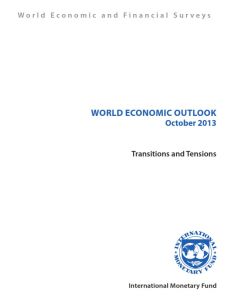Join getAbstract to access the summary!

Join getAbstract to access the summary!
International Monetary Fund
World Economic Outlook October 2013
Transitions and Tensions
IMF, 2013
What's inside?
Changes and challenges remain as the world’s economies enter a new phase.
Recommendation
With the global financial meltdown in the rear view mirror, the world’s economies are traveling in new directions. Once battered by crisis, advanced economies are showing modest growth and good potential, while the formerly buoyant emerging nations are butting against structural and cyclical economic problems. Both camps must deal with high and chronic unemployment with its social, political and fiscal ramifications. Pending unknowns – like the impact of the anticipated end of the US Federal Reserve’s easing and a slowdown in China’s growth – create significant new risks. Teams of researchers and analysts from the International Monetary Fund tracked the world’s economies to assess their conditions and make some informed projections about 2014 and beyond. getAbstract sees the IMF’s comprehensive approach and reasoned analysis about the state of the global economy as required reading for bankers, business executives and economists.
Summary
About the Author
The International Monetary Fund is a global organization that provides advice and financing to member states in economic difficulties and works to reduce poverty in developing nations.



































Comment on this summary